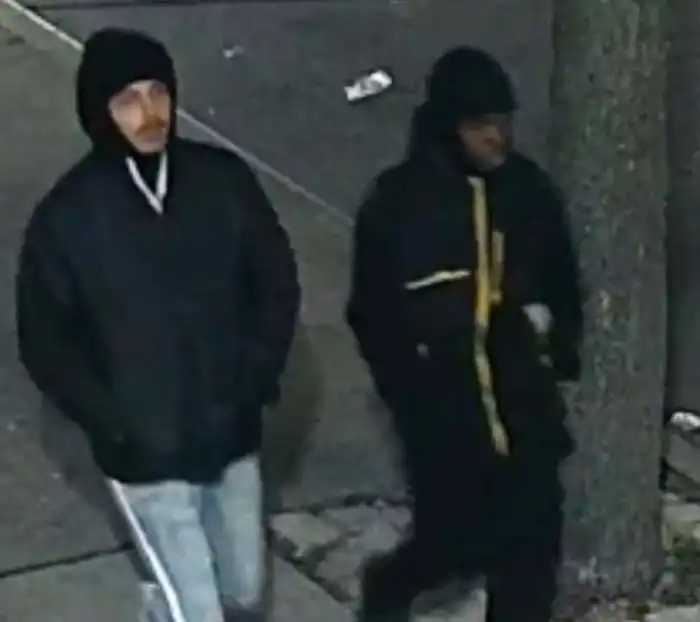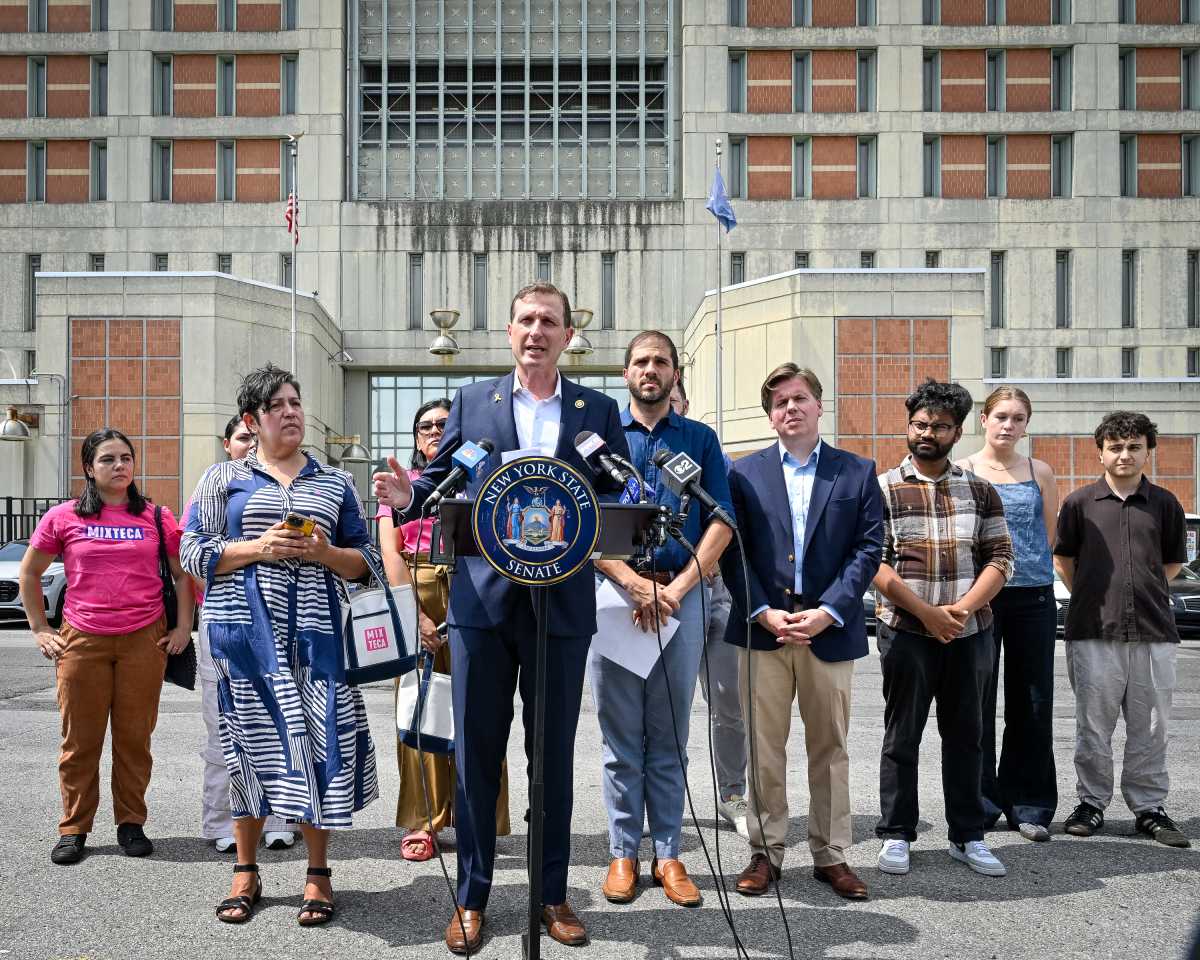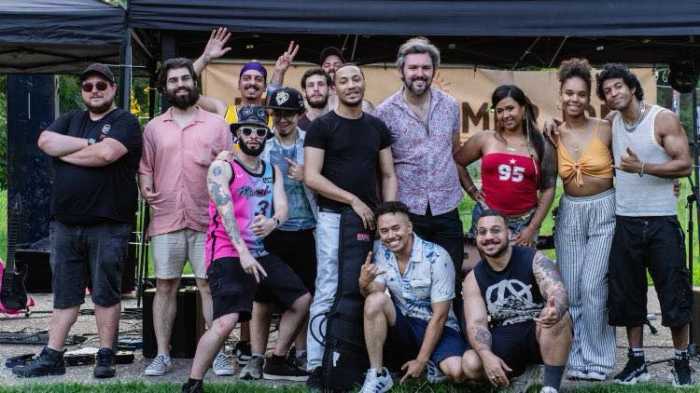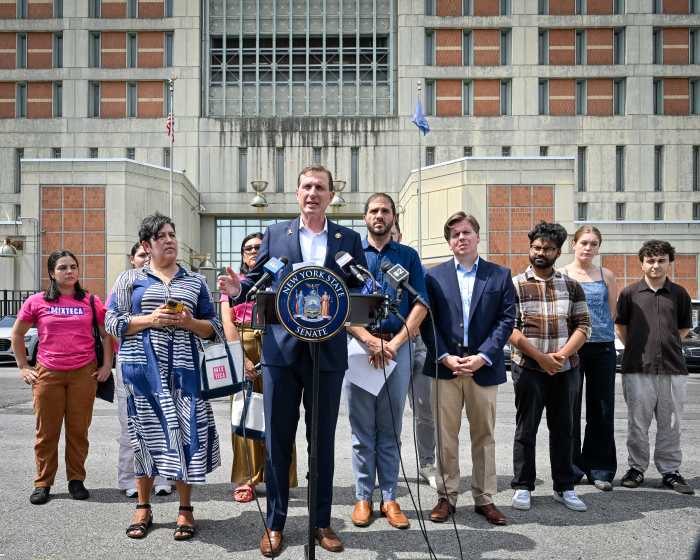
The MTA’s half-fare student MetroCard is half-baked, according to city pupils.
About two dozen students rallied outside of the Union Square subway station Sunday in support of a new MTA proposal to replace half-fare, bus-only Student MetroCards with full-fare cards.
The transit authority currently only provides full-fare MetroCards — eligible for use on subways and buses between 5:30 a.m. and 8:30 p.m. — to students living more than 1.5 miles from their school. Hundreds of thousands of students living between 1.5 and 0.5 miles from their school get only a 50 percent fare break, creating inequities in how city kids get around and what they can do after school.
“The current MetroCard policy is a system that creates and perpetuates circumstances of racial injustice, of economic injustice and kind of establishes the narrative that the ZIP code where you grow up will determine your future,” said Emma Rehac, 17, of Central Harlem, who as a student at Eleanor Roosevelt High School in the Upper East Side launched a campaign for the elimination of half-fare cards.
“Student transportation is a social justice issue just like anything else that really demands attention,” Rehac added.
Half-fare cards for local buses are offered to students between the seventh and twelfth grades living between a mile and 1.5 miles from their campuses. The MTA also issues the cards to third through sixth grades living between a half-mile and a mile from their schools.
Those students must carry the balance in change, currently $1.35, with them for every trip — what students described as highly impractical. Beyond that, the policy creates economic burdens for lower-income families and poses challenges for students deciding between meals or transit, or those traveling to after-school jobs or extracurricular activities, like sports or cultural events, students said.
“For families who can’t afford it, it means they can’t make those choices — they can’t choose after-school programs, they can’t go to classes on time … they can’t get on the subway. They have to wait for a local bus,” said Manhattan Assemb. Harvey Epstein, who helped Rehac organize her campaign when she worked for him as a field director over a summer.
There are approximately 27,000 daily bus trips using the half-fare cards, according to the MTA. The authority issued 200,500 half-fare MetroCards to the DOE for distribution during the spring 2018 semester, according to the Epstein’s office — a takeup rate that proves how “fraught” the cards are, Epstein said.
On Monday, the MTA’s Transportation committee will vote on the policy change, which will then move to a full MTA board vote on Wednesday. The change is expected to cost the MTA roughly $200,000 annually. It was not immediately clear what spurred the authority to reconsider the fares.
“This is a common-sense policy that makes it easier for kids to get to school and does away with needless complexities that have existed for too long,” said New York City Transit President Andy Byford in a statement. “Replacing half-fare cards with full-fare ones saves money for students and saves time for everyone on a bus since the need for coins is eliminated.”
But students and Epstein said there is more work to be done. London, where Byford has previously worked, for example, offers free bus and tram travel to commuters under 18 years of age who work or are in school.
Rehac believes full-fare cards should be expanded to more students, like those living within a half-mile of their schools, and usable later into the night.
“This is just the first step,” Rehac said. “It’s thought that, ‘Oh, maybe if we end [the card use] early, they’ll come home earlier. But what happens is now you’re leaving the most at-risk students stranded late at night.”



































